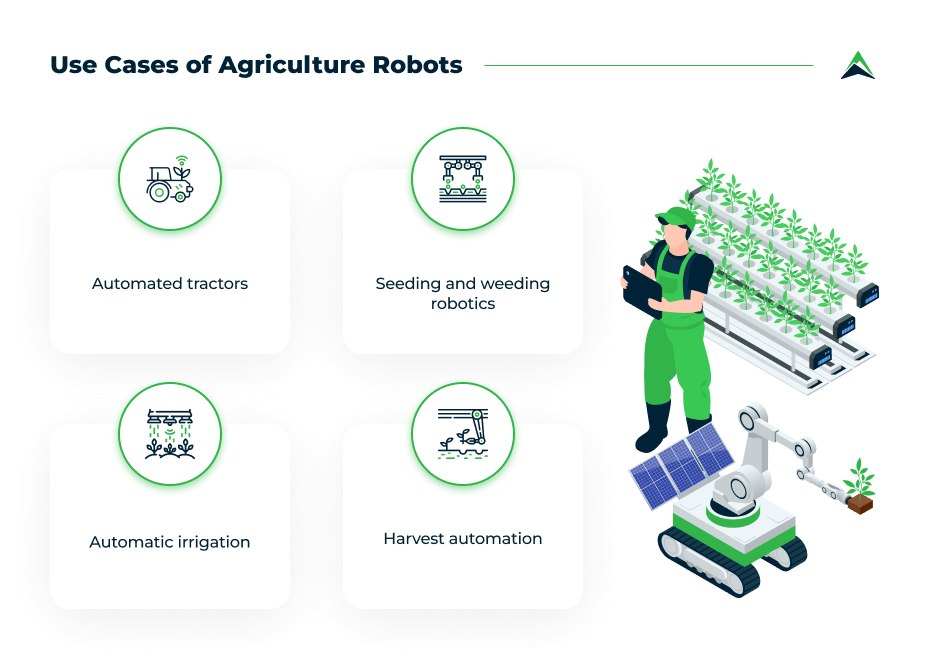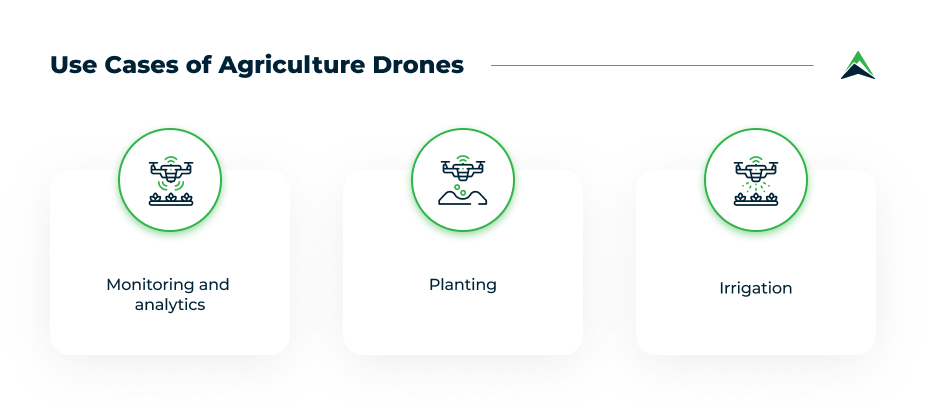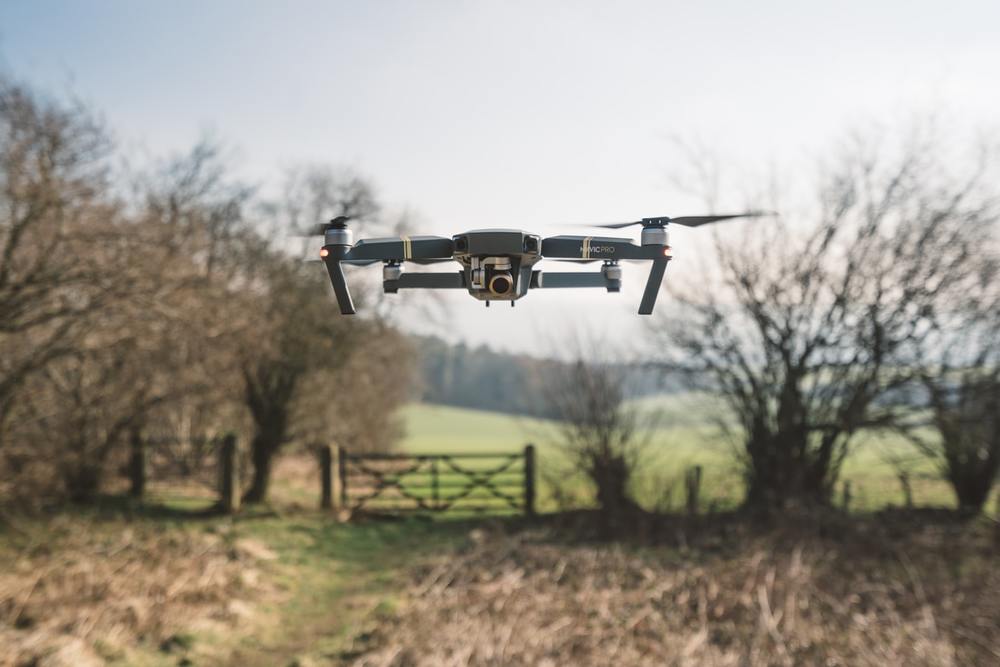The article was updated on March 4, 2023.
The world population is growing steadily, and now it has reached 7.7 billion people. One question that comes to mind is, what are all these people going to eat? This question primarily focuses on the agriculture industry.
The growing population is hardly the only challenge facing modern farmers. What about labor shortages and consumers asking for eco-friendly sustenance? The answer to all these questions is smart farming.
As of now, automated agriculture is a diverse sphere, so we are going to cover the latest innovations and the derived benefits.
One solution to many challenges: What is farm automation?
Why would hundreds of business owners invest in automated farming? The current challenges that face the agriculture sector need to be immediately addressed. If you work in this sphere, these problems are nothing new for you:
- Consumer preferences. The overload of fast food and other unhealthy meals on the market has led to a demand for healthier food products. The impact that unhealthy food has had on our bodies has led to a “back to basics” approach: consumers all over the world are craving plant-based, wholesome food. Farmers should provide it in large amounts to meet the new consumer demand.
- Labor shortage. Nowadays, it is rare to find a teenager who dreams of becoming a farmer. The reality is that as the world population increasingly prefers an urban lifestyle, the farming industry faces a significant labor shortage. Furthermore, modern agricultural practices have changed over the last decade, which makes it harder to train new workers.
- Ecological responsibility. The general public and local authorities expect agricultural companies to be eco-friendly and demonstrate a responsible approach to their work. Farmers should opt for a reduced usage of chemical components, in particular, pesticides. Business owners in the agricultural sector are looking for a solution in response to this social and ecological demand, and they can find it in farm automation.

Farm automation (or smart farming) is various tech innovations in traditional farming to optimize the food production process and improve quality. As of now, advanced farming technology can be an essential part of the farmer’s daily work.
Robots and drones: Ways to use automation in agriculture
Farm automation is a very broad sphere, so its usage heavily depends on the company’s individual needs. Will drones or robots suit your business better? Let’s see what works best in different cases.
Robots and autonomous machines
Agriculture is a perfect niche for innovations in the sphere of robotics: farmers usually have to deal with repetitive tasks in the field, and this work is primarily labor-intensive. Now agricultural robots (or “agrobots”) cope with a wide range of tasks: harvesting, watering, seeding, etc. Let’s take a closer look at their work.

Automated tractors
Remote control is possible for these types of tractors. It is only necessary to help during the initial setup and maintain machines regularly. With time, smart tractors will become more and more independent with such technologies as vision systems, tools for light detection, GPS, etc.
Read also: Smart Agriculture Monitoring Solutions to Optimize Farming Productivity
Bear Flag Robotics specializes in building driverless tractors and aims to make the labor cheaper for farmers. They can control several tractors remotely, plan the machine’s route, and get real-time reports and alerts – the work can be done without direct human intervention in the field.

Seeding and weeding robotics
Robots for planting are focused on the field’s specific area, and they work with great precision. This type of farming robot uses artificial intelligence and computer vision, which allows for a reduction of pesticides in the field and, subsequently, the production of high-quality food.
Eco Robotics produces completely autonomous robots that use solar power for their work. This is the greenest approach: a small four-wheel machine is moving across the field and spraying herbicides with minimum damage to the crops and environment.
Automatic irrigation
Robot-assisted irrigation systems roughly contain two big parts: a Subsurface Drip Irrigation (SDI) system plus special sensors.
SDI is well-known in the agriculture industry – it provides an accurate means of controlling the amount of water that is used and at what time the plants receive it. Even though these systems are obviously more advanced than manual plant-by-plant watering, they are still not perfect, as they require some human assistance.
Read also: 6 Cool Examples of Internet of Things Applications and How to Develop One
More sophisticated IoT sensors can monitor the moisture levels by themselves and send real-time analytics to a smart device. The combination of SDI and such sensors creates automated farming equipment that facilitates the work and saves water resources.
The RAPID (Robot-Assisted Precision Irrigation Delivery) project offers farmers a cost-conscious solution based on the work of adjustable irrigation emitters across the field.
Harvest automation
Harvesting is not easy work for machines – they should be gentle enough not to damage fruits and vegetables. Nevertheless, harvest robots already exist, and they cope with their tasks successfully.
For example, Abundant is the first commercial company specializing in apple harvesting. The trick is to use a vacuum instead of graspers or similar devices. Agrobot, in turn, is closer to the ground – the company builds robots to harvest strawberries. This innovation determines the fruit’s ripeness via AI technology.
Drones
Drones have an important role in agriculture’s innovative changes. Earlier, glancing over a field was possible only with helicopters or even satellites – things have changed now. Using a drone is cheaper and does not require any special human skills like flying a helicopter.
Read also: Why Use Agriculture Drones? Main Benefits and Best Practices
Drones can take aerial photos and videos, and the files’ quality is getting better with time. But this is far from the only way to use drones in agriculture.

Monitoring and analytics
The average field size makes it almost impossible to properly monitor the state of a harvest. Previously, the most reliable solution was satellite imagery, but still, it did not give enough guarantees to farmers: such images were inaccurate and did not provide real-time information.
With drones, automation in farming is brought to the next level. Drone devices can identify damaged crops using different types of light, including near-infrared. Farmers receive this information immediately and can quickly react to the changing conditions (check the eBee SQ drone developed by senseFly).
Drones are also useful when creating a planting scheme. They provide 3D field maps with soil analysis – it helps farmers make the right decisions at the very beginning of the crop cycle.
Planting
Automated farms can use robots for seeding, not only on the ground but also for planting from the air. Let’s see how it works.
Read also: How Data Analytics Empowers Food Production
The main goal of DroneSeed is to help reforest lands after wildfires. The drone carries a module that “shoots” seeds at the set place and specific distance from each other. To make it possible, developers use compressed air – this way, seeds will not scatter around the field
Forestry, however, is not the only branch that requires the help of a drone. We might see “air planting” used more often as a part of agricultural automation.

Irrigation
And finally, you can use drones to water plants in the field. Thanks to the latest innovations, such drones adapt to several location factors: altitude, objects in the field, weather conditions, etc.
Agras MG-1’s drone created by DJI is powerful (it can carry up to 10 liters of liquid) and fast (it covers up to 6,000 m² in 10 minutes). It saves lots of time and effort – manual watering is dozens of times slower.
Read also: Busting Myths of Employing Technologies in the Food Industry
If several farming automation solutions work in conjunction, the watering drones can get signals from other agrobots about the plants that need the help more than others. In other words, agrobots communicate with each other and solve problems on the go.
Benefits of farm automation
One agrobot can change the future. Smart farm automation technology has enormous potential to be tremendously impactful. The solution to numerous global problems and the creation of eco-friendly approaches lie in this field of technology.
- The agriculture industry meets consumers’ demands.
We have mentioned that consumer demands and their preferences are changing. We all want food to be fresh and quickly delivered to shops and markets. Agrobots allow farmers to save time and money.
- The labor shortage in the industry is decreasing.
Labor in some farming branches can take up to 50% of the overall cost. The labor shortage makes this situation even more dramatic. Using robots for seeding, harvesting, watering, and monitoring decreases the need to hire employees for numerous monotonous tasks.
- Agriculture is becoming more eco-friendly.
The usage of pesticides frightens many people; that is why agriculture is gaining an infamous reputation. Robots are shifting the rules of the game towards an environmentally friendly approach: they can add pesticides with great precision, which is almost impossible when done by an actual human.
The revolution in agriculture is around the corner
Several years ago, seeding drones were only a fantasy of several brave developers – and look where we are now. Robots and drones work together, creating connected smart farms. They exchange information, send signals to each other, and help agriculture to be ten steps ahead and feed billions of people.
But any IoT solution has software instruments that stand behind and support the farm, no matter how complex it is. Every drone or automated tractor needs a brain to make the right decision about the plants in the field.
If you run an agricultural business, the latest IoT innovations will bring you income and help you cope with the various challenges. At Eastern Peak, we create the minds of agrobots, and we will share our experience with you – just drop us a line.
Read also:



